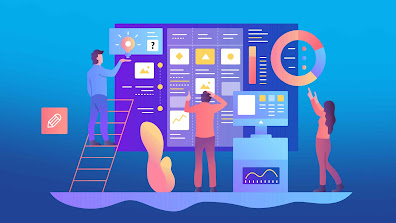The Future of NLP: Predicting the Next Wave of Technological Advancements
Natural Language
Processing (NLP) has made tremendous strides over the past decade,
transforming how machines understand, interpret, and respond to human language.
From virtual assistants like Siri and Alexa to advanced chatbots and language
translation services, NLP is at the forefront of AI technology. As we look to
the future, several emerging trends and technological advancements are poised
to redefine NLP's capabilities and applications.
1. Transformers and
Pre-trained Models
The introduction of transformers,
such as BERT, GPT, and T5, has revolutionized NLP by enabling models to
understand context and nuances in language better than ever before. These
models leverage massive datasets and have demonstrated state-of-the-art performance
in various NLP tasks, from text classification to sentiment analysis.
The Next Wave: The future
of transformers includes improvements in efficiency, allowing these models to
run on smaller devices without losing accuracy. Additionally, we can expect new
transformer architectures that further enhance context understanding and reduce
training time, making NLP even more accessible.
- Efficient Transformers: Advances like Sparse
Transformers and Longformer aim to reduce computational
overhead while maintaining performance. This will make real-time
processing of large documents feasible, opening up possibilities in fields
like legal tech and academia.
- Zero-shot Learning: The next generation of
transformers will increasingly support zero-shot and few-shot learning,
where models can perform tasks without being explicitly trained on them.
This is set to democratize NLP, allowing businesses to deploy powerful AI
without extensive data training.
2. Multilingual NLP
Currently, many NLP tools are
English-centric, limiting accessibility for non-English speakers. However, with
advancements in multilingual models, we're beginning to see tools capable of
understanding and generating text across multiple languages.
The Next Wave: Future NLP
advancements will focus on universal language models that can seamlessly switch
between languages, enhancing cross-cultural communication and collaboration.
- Polyglot Models: With models like XLM-R
and mT5, we are moving towards NLP systems that support multiple
languages natively, providing equally robust results irrespective of
linguistic nuances.
- Real-time Translation: Future models will
enable real-time, accurate translation with context preservation,
transforming global communication in sectors like tourism, business, and
diplomacy.
3. Contextual Understanding
and Sentiment Analysis
Understanding the context and
sentiment behind human language remains a challenge. Current models can
struggle with sarcasm, idioms, and emotional subtleties.
The Next Wave: Advanced
sentiment analysis and contextual understanding tools will better capture human
emotions, making interactions more empathetic and relevant.
- Emotion Recognition: Future NLP systems will
integrate emotion detection, providing more personalized experiences. This
will be crucial in customer service, where understanding a customer's
emotional state can lead to improved satisfaction and loyalty.
- Narrative Comprehension: Enhanced
comprehension of narratives and user intentions will allow NLP systems to
participate in conversations more naturally, contributing to fields like
storytelling and automated content creation.
4. Ethical NLP and Bias
Mitigation
As NLP models grow in influence,
so does the concern over biases they may harbor, potentially leading to
discriminatory outcomes.
The Next Wave: The future
of NLP involves developing ethical frameworks and bias detection tools that
ensure fair and transparent AI interactions.
- Bias Detection Algorithms: Advanced algorithms
will identify and mitigate biases in data and model outputs, promoting
fairness and inclusivity across applications.
- Explainable AI: As NLP models become more
complex, explainability will be crucial, ensuring users understand how
decisions are made and fostering trust in AI systems.
5. Integration with IoT and
Edge Computing
The integration of NLP with IoT
devices and edge computing is set to enhance the user experience by enabling
real-time language processing on devices without relying on cloud-based
systems.
The Next Wave: NLP will
become an integral part of smart devices, providing seamless interactions in
various domains, from smart homes to autonomous vehicles.
- On-device Processing: On-device NLP will
enhance privacy and responsiveness, allowing voice-controlled gadgets and
IoT devices to function independently of cloud services.
- Edge AI: Combining NLP with edge computing
will enable more complex processing tasks to be performed locally,
reducing latency and improving user experience.
6. NLP in Healthcare and
Personalized Medicine
The healthcare industry stands to
benefit immensely from NLP advancements, as medical data is predominantly
text-based.
The Next Wave: NLP will
play a pivotal role in analyzing medical records, aiding diagnosis, and
offering personalized treatment plans.
- Clinical Text Analysis: Future NLP tools will
analyze unstructured medical data, extracting valuable insights to assist
clinicians and researchers in developing treatment plans.
- Patient Interaction: Advanced conversational
agents will handle patient queries, triage, and follow-ups, improving
healthcare accessibility and efficiency.
Conclusion
The future of NLP promises to be
dynamic and transformative, with advancements that will reshape industries and
redefine human-computer interaction. As we continue to explore these
possibilities, NLP will undoubtedly become a more integral part of our daily
lives, making technology more intuitive and accessible. By staying ahead of
these trends, businesses and developers can harness the power of NLP to drive
innovation and success in the coming years.



Comments
Post a Comment